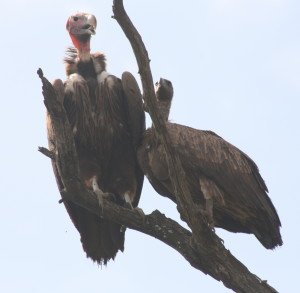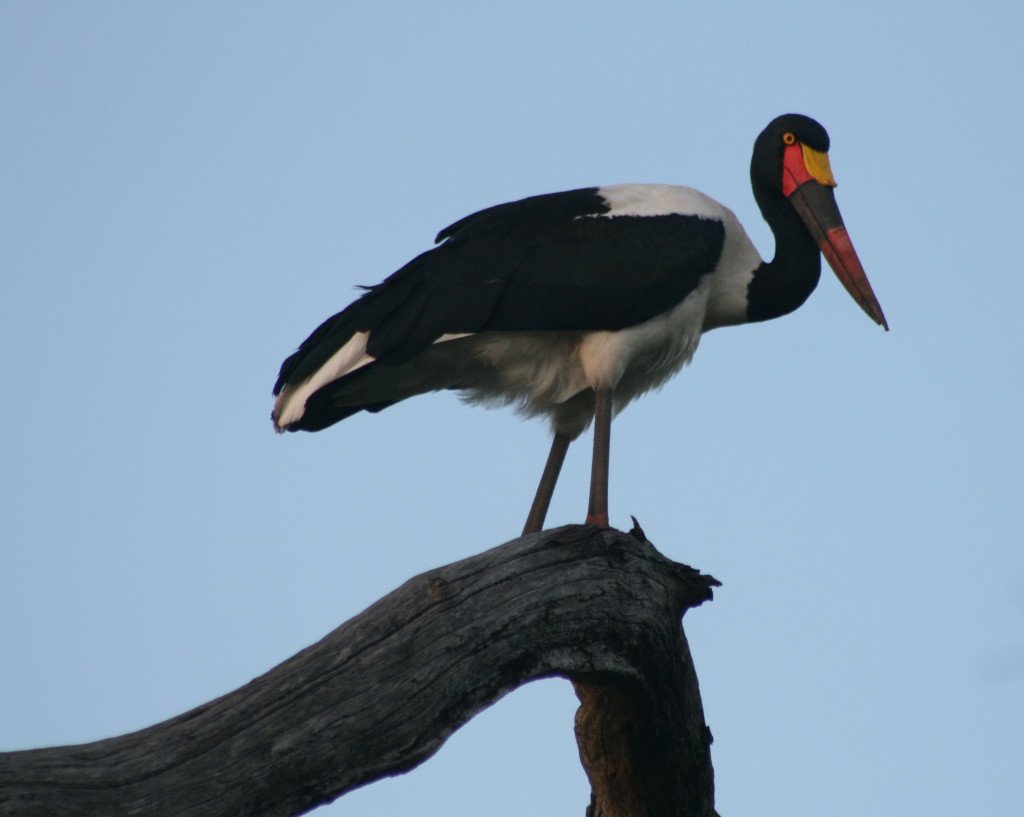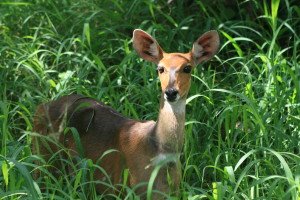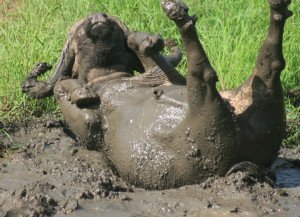Limpokwena Nature Reserve 0

Birding in the arid north-western reaches of the Limpopo Province is much more profitable when there are rivers around and the Limpokwena Nature Reserve is a case in point.
Situated where the Limpopo and Mogalakwena rivers meet, Limpokwena is like a bushveld oasis in the vast stony plains of Mopane scrub that dominate the region.
The well-equipped lodge area is a place of tremendous tranquility under the fever and sausage trees and, from the reserve entrance to the main camp, there is a road along the Mogalakwena River that provides a foretaste of the marvellous birdlife that is to come.
There are lovely massive trees along this major tributary of the Limpopo, which marks the border between South Africa and – from west to east – Botswana, Zimbabwe and Mozambique. The Mogalakwena starts life as the Nyl River in the eastern Waterberg.
A morning drive along the Mogalakwena River brought something special early on as the bright yellow flash of a Goldenbreasted Bunting flying into a tree next to the river caught my eye, closely followed by a Greyheaded Kingfisher alighting in the same dead branches.
Not far from where I spotted the Greyheaded Kingfisher, an intra-African migrant that is always a good sighting, the road passes a beautiful spot with the Mogalakwena on the one side and a big pond on the other, surrounded by very pleasant riverine forest.
A Malachite Kingfisher, a year-round resident, was catching breakfast in the pond and creating ripples that disturbed the serene reflection of trees and clear blue sky in the water.
A little further on, a handful of Blackfaced Waxbill were feeding on the seeds of the tall grass, that is so prevalent in March in the Limpopo River Valley, and then flying up into the remains of a thorn tree. These typical seed-eaters of the arid west nest in thorn trees.
Blackfaced Waxbill are pretty unobtrusive little birds, the antithesis of the raucous Hadeda Ibis.
But my first sighting of these very familiar birds that are normally quick to announce their presence was of a couple quietly straggling along the river road. Of course I did soon hear noisier Hadedas.
Seeing as though ‘Mogalakwena’ means ‘fierce crocodile’ in the local Tswana language, it was little surprise to spot a rather large one, on a sandbank, well-hidden by some short trees.
Lodge sundowners
Heading back to the lodge, just up the road from that idyllic space, some Vervet Monkeys peered at me naughtily, their heads poking above the long grass. Fortunately they were no trouble at all on this trip.
A sundowner outside my cottage, close to the Mogalakwena and a smaller stream, was called for and, overlooking the stream bed from a slighly elevated vantage point, one gets excellent views of whatever is flying around the riverine forest.
A Tropical Boubou was rather noisy as it settled down for the night in the trees above the firepit and, well after sunset, a Woodland Kingfisher landed in the tree in front of me, calling away; their loud, piercing call is one of the sounds of summer in northern South Africa.
An African Scops Owl also popped in for a visit, giving its characteristic frog or insect-like call (depending on what amphibians or insects sound like in your neck of the woods) – Prrrrruup! – from close quarters.
The smaller stream was a side channel, a dry bed with pools of water after the rains and well-wooded fringes, which is why there was still a fairly new-looking Hamerkop nest in a tree in front of my cottage.
These massive nests are amongst the most remarkable in the Avian kingdom and I did see a few Hamerkop flying in fluttery fashion along both rivers.
The next day a Crested Barbet was investigating holes in the trees in front of the cottage and an Emeraldspotted Wood Dove was pottering around in one of the dry stream beds.
The deck
The lodge have built a deck on the banks of the Mogalakwena River and this is a great spot to look over and along the water.
A Brown Snake Eagle was cruising overhead and a Meyer’s Parrot was clearly visible at the top of a Red Bushwillow, eating the seeds, which are poisonous to livestock but loved by parrots.
A Greenbacked Heron came flying along the full river, which also had a Pied Kingfisher patrolling, and then the dry 35° heat meant it was time to cool off at the swimming pool, which was sparkling most alluringly in the shade of the welcoming trees back at the warm hospitality of the lodge.
An African Fish Eagle was calling and soaring high above the swimming pool and then a single Arrowmarked Babbler flew with great purpose over the pool to join its noisy colleagues who were headed towards the riverine bush.
As one enters Limpokwena, one is struck by the rugged, arid landscape. Thorny trees and Mopane thickets seem to be the only vegetation seen in the heat haze, apart from the Baobabs, scattered amongst the old farms and scratched by the former inhabitants and gouged by the Elephants which currently roam the area, many coming across the Limpopo from the Tuli Block in adjoining Botswana.
As I drove through the gate, a group of Chacma Baboons seemed to be chilled and happy to see me, but my closer approach saw them stampede away, fleeing across the old farmlands.
A Common Myna then came flying across the road towards the Mogalakwena River with nesting material in its beak.
It was not a very promising start.
The Mopaneveld
But it’s not just the riverine areas of Limpokwena that make this such a highly-recommended spot for nature lovers. There is also much to discover in the rocky koppies of this hot and dry region.
When one comes out of the river drive, the road heads westwards straight into the heart of the Mopaneveld. A Jacobin Cuckoo flew across the road and then played a bit of hide-and-seek as I tried to get a decent sighting.
There were numerous Whitebrowed Sparrow Weavers and lots of nests, although many of these are roosting nests. Practically all of them, however, are on the leeward side of the trees, away from the prevaling wind. The most widespread of the Sparrow Weavers is also quite chirpy and bossy.
A family group of White Helmetshrike also flew across the road, chuckling away at their noisy, colonial neighbours.
A big group of Banded Mongoose, 15-20 of them, were also on the road and, with no termitaria in sight, they had probably come down from their shelter in the rocky outcrops, which were dotted with the striking Purple-Pod Cluster-Leaf (Terminalia prunioides). The plum-coloured fruits of this deciduous tree, which is often associated with Mopane, are also loved by parrots.

As the road then turns north and heads gently down towards the Limpopo River, one comes across a clearing in the Mopaneveld, a peaceful bit of open Acacia savanna.
A Giraffe was enjoying browsing in a less-enclosed space, attended to by a Redbilled Oxpecker. Whitefronted Bee-Eaters were sharing a tree with Redbilled Buffalo Weavers and there was also a European Roller in the vicinity. An African Hoopoe and a Glossy Starling were confidently picknicking on the ground next to the road.
The peace was rather shattered, however, when a Namaqua Dove male that was chilling in a tree was dive-bombed by another arriving male!
When I headed out again in the afternoon on my complimentary game drive with host Riley as a wonderful companion – so passionate and interesting about the bush – we started by admiring a Lesser Grey Shrike, which was incredibly dapper in its bright white, grey and black colours.
Soon we were enjoying a herd of African Elephant as a couple of Helmeted Guineafowl went careening down the road at breakneck speed.
We went through that same patch of open Acacia savanna and the Bee-Eater, Hoopoe and Glossy Starling were all still there.
Our destination was Island Camp, and seeing it was one of the highlights of my stay. It would be a dream camping spot for me and anyone else feeling adventurous.
Island Camp is a stunning spot on the Limpopo and you have to cross a high log-bridge over one of the channels of the river to get there. You are basically camping right in the river as there are four rustic tents set up on an actual small, unfenced island in the river famous for both its beauty and danger.
There is a little bench of waterfalls just up the way from the camp which looks a great spot for fishing birds, and the pristine riverine trees, where a Collared Flycatcher had been seen a month earlier, allowed me to add Goldentailed Woodpecker and Spottedbacked Weaver to my list.
Before returning to the Lodge, we popped in at the superb sunken photographic hide. There were a pair of Great Sparrow, which can be locally common but are mostly uncommon in South Africa, on the telephone line approaching the hide and I was delighted when they then came to the water to drink.
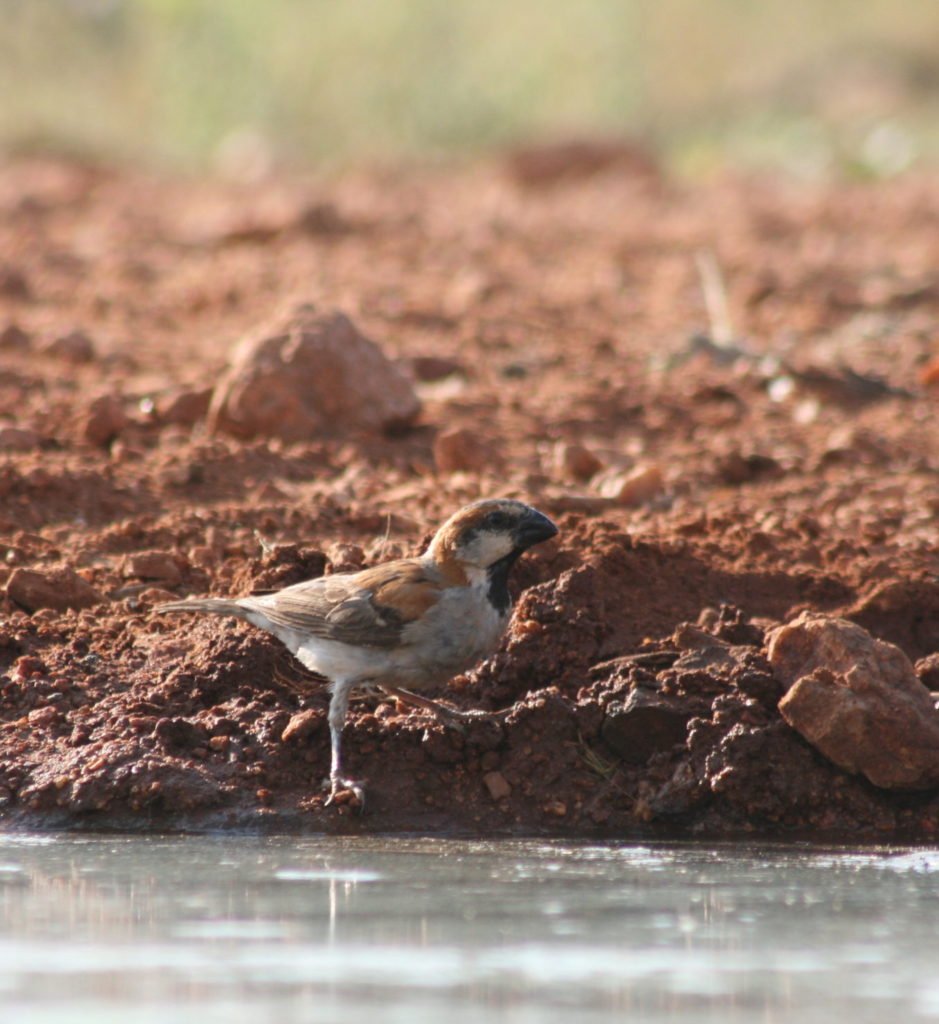
On my final morning at Limpokwena, a quick scan of the waterhole, that has water pumped into it regularly, at the lodge showed little else than Marsh Terrapins and a Brownhooded Kingfisher in the trees along the dry watercourse running just outside the fence-line.
On the way out of this quite wonderful bit of natural wilderness, a Steppe Buzzard was quietly perched, perhaps also departing, beginning its northward migration as summer came to a perfect end.
Where is Limpokwena Nature Reserve?
Sightings List
Chacma Baboon
Impala
Common Myna
Southern Yellowbilled Hornbill
Redeyed Dove
Pied Kingfisher
Plains Zebra
Cape Turtle Dove
Lilacbreasted Roller
Vervet Monkey
Waterbuck
Blue Wildebeest
Tropical Boubou
Tree Squirrel
Woodland Kingfisher
Hamerkop
Forktailed Drongo
Redbilled Hornbill
Redbilled Woodhoopoe
Laughing Dove
Common Warthog
Egyptian Goose
Greyheaded Kingfisher
Goldenbreasted Bunting
Grey Hornbill
Malachite Kingfisher
Grey Heron
Blackeyed Bulbul
Blackfaced Waxbill
Southern Greyheaded Sparrow
Natal Francolin
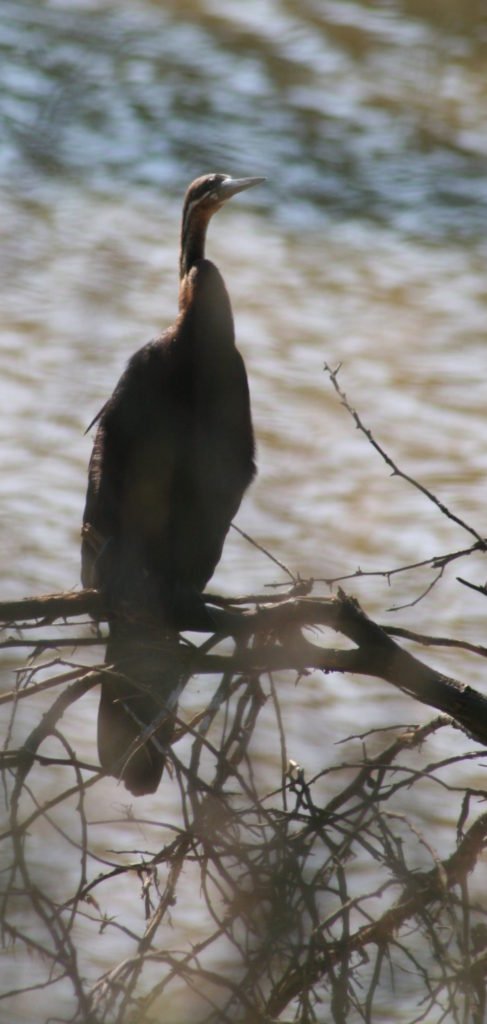
Hadeda Ibis
Nile Crocodile
African Darter
Longtailed Starling
Jacobin Cuckoo
Whitebrowed Sparrow Weaver
White Helmetshrike
Banded Mongoose
Redbilled Quelea
European Bee-Eater
Namaqua Dove

Whitefronted Bee-Eater
Redbilled Buffalo Weaver
European Roller
Giraffe
Redbilled Oxpecker
African Hoopoe
Glossy Starling
Grey Lourie
Greater Kudu
Blackbacked Puffback
Crested Barbet
African Fish Eagle
Arrowmarked Babbler
Emeraldspotted Wood Dove
Lesser Grey Shrike
African Elephant
Helmeted Guineafowl
Crowned Plover
Goldentailed Woodpecker
Spottedbacked Weaver
Cinnamonbreasted Rock Bunting
Great Sparrow
Common Duiker
Redbacked Shrike
Blacksmith Plover
Southern Masked Weaver
Brown Snake Eagle
Spotted Flycatcher
Water Dikkop
Meyer’s Parrot
Threebanded Plover
Greenbacked Heron
African Scops Owl
Five-Lined Skink
Marsh Terrapin
Brownhooded Kingfisher
Steppe Buzzard

